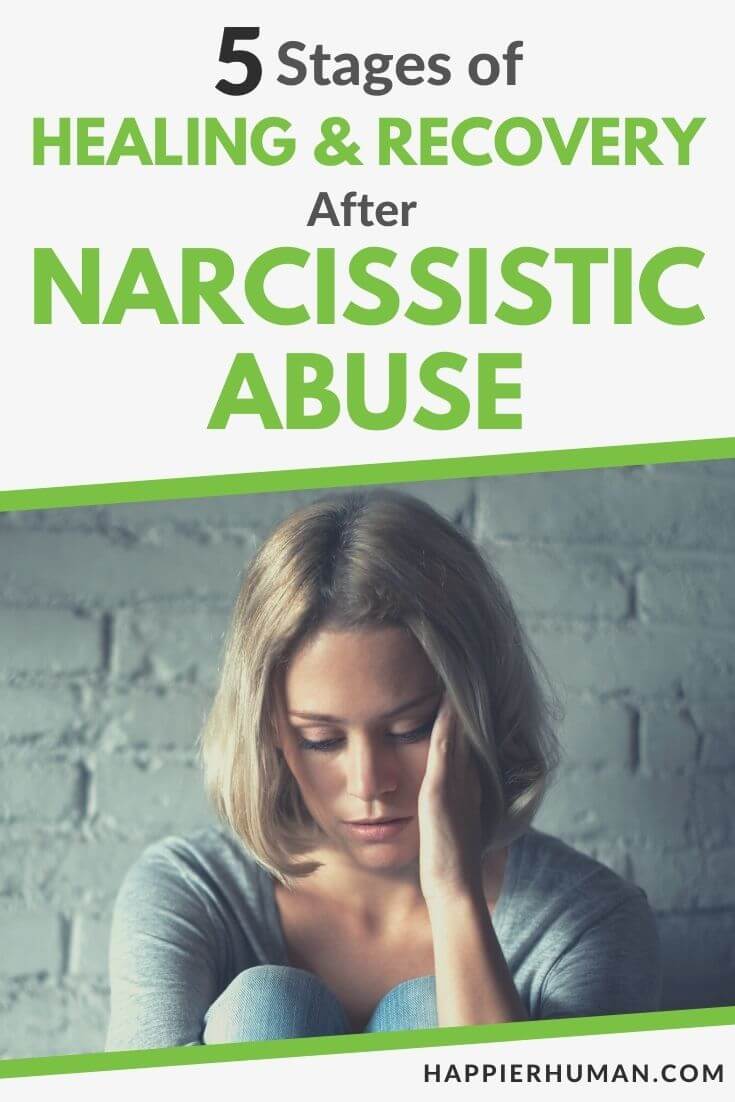There might be affiliate links on this page, which means we get a small commission of anything you buy. As an Amazon Associate we earn from qualifying purchases. Please do your own research before making any online purchase.
From gaslighting and shaming to rationalization and emotional blackmail, narcissists have an entire arsenal of strategies to manipulate, assert dominance, and achieve their personal goals.
What’s left in their wake is suffering, abuse and emotional trauma, especially if the people close to them (personally and professionally) are caring, trusting, and compassionate individuals.
As a mental health professional, I can honestly say that even after 6+ years of working in this field, I still find it quite challenging to work with narcissistic personalities.
Over time, I’ve learned to set clear and strict boundaries, identify their subtle attempts to intimidate me, and “disarm” them without being harsh, offensive, or dismissive.
Allow me to take you through all the stages of healing after narcissistic abuse.
What You Will Learn
What is Narcissistic Abuse?
Before we talk about narcissistic abuse, I think it’s important to note that not all abusers are narcissistic. In addition, a person may have narcissistic tendencies without meeting the diagnostic criteria for narcissistic personality disorder.
Furthermore, even though narcissistic abuse typically occurs in romantic relationships, friends, coworkers, and family members could also fall victim to a narcissist’s manipulation tactics.
The term “narcissistic abuse” refers to a consistent pattern of emotional manipulation, pathological lying, and other strategies that one can inflict upon their partner to damage their self-esteem and self-worth.
Narcissists are experts when it comes to ‘juggling’ emotions or using language in a way that alters someone’s behaviour and attitude.
Furthermore, as one author puts it, they have the sole focus of meeting their own needs with little to no regard for the feelings and needs of others. [1]
In time, the victims of narcissistic abusers begin to doubt their value and even their sanity.
And the worst part is that the abuse unfolds subtly, making it difficult for victims to notice the emotional and behavioural changes they’ve gone through ever since they fell in love with their narcissistic partner.
One study revealed that it was even harder for victims of narcissistic abuse to receive help during the pandemic, as enforced quarantine made it easier for abusers to exercise coercive control. [2]
Living in an emotionally abusive relationship is something no one should endure. Unfortunately, narcissistic abusers are difficult to identify, especially when the first few dates seem immaculate and enchanting.
But life with a narcissistic partner can lead to many psychological problems and can have a profoundly negative impact on your overall sense of well-being.
Healing after narcissistic abuse can be pretty draining, given that such relationships can leave you struggling with self-esteem issues and even PTSD.
Narcissistic Abuse Happens Gradually
As I said earlier, narcissistic abuse happens gradually.
To better understand how this process unfolds, allow me to detail the main stages of a relationship with a narcissist.
1. The Idealization Stage
During the first stage, a narcissist will try to gain your trust and affection through grandiose gestures and big promises.
The purpose is to set the foundation for a strong bond that will keep you close to them.
The connection is based on an avalanche of positive experiences designed to blind you from what is happening.
Often, narcissistic abusers will present themselves as victims, painting a false image about their past relationships.
For example, he might ‘bomb’ you with a tear-jerking story about how his ex-girlfriend broke his heart and left him suffering.
In short, narcissists will try to make themselves irresistible by any means.
2. The Devaluation Stage
Once the foundation is in place and you’ve gained enough confidence, a narcissistic abuser will gradually try to destroy your self-confidence.
In addition, they will constantly make you doubt your identity to gain more control over your life.

One of the most common tactics that narcissistic abusers employ is criticism. In other words, the envy they have towards your qualities, skills, or success will fuel a barrage of overt or covert critical remarks designed to drag you down.
Studies suggest that narcissists will most likely react aggressively or violently when faced with rejection or confronted with their ‘toxic’ attitudes towards others. [3]
3. The End
The further the relationship progresses, the more brutal the abuse.
This is when the abuser will use gaslighting, denying your reality and imposing their own (false) version of reality.
Such tactics are designed to make you doubt your perceptions, thoughts, and emotions, throwing you into a spiral of self-doubt.
When the relationship begins to crumble, a narcissistic abuser will often look for someone else. Then, sooner or later, you will be dumped without any explanation or warning.
In some cases, your narcissistic ex will carry out defamation campaigns and make unfounded allegations against you to clean their image.
Now that you know how the relationship unfolds, you can probably imagine why healing after narcissistic abuse can be a long and emotionally tiring process.
7 Telltale Signs of Narcissistic Abuse
1. Pathological lying
One defining characteristic of narcissistic abusers is the tendency to lie compulsively, often contradicting themselves and taking zero responsibility for their actions.
They will often try to convince you that you’re crazy or make you doubt your memory. Any attempt to defend your version of the story will be met with an aggressive and dismissive attitude.
Therefore, it’s essential to have confidence in your memory and the ability to see through their web of lies.
2. Negative comparisons
Narcissistic abusers will often compare you with others (or even themselves) to highlight your failures, flaws, and shortcomings.
This tactic destroys your self-esteem and cultivates self-defeating beliefs that damage your identity.
As a result, they gain power in the relationship.
3. Financial abuse
One less discussed tactic that narcissistic abusers employ is financial abuse.
In other words, they will try to control you financially through theft, blackmail, manipulation, or by accumulating debt under your name.
4. False promises
Sometimes, when a narcissistic abuser feels threatened, he will give you something he knows you want.
For instance, they may agree to take the next step in the relationship – like moving in together or getting married – or go to couples counselling.
For a moment, they may do all the things they promised, but once they achieve the goal of keeping you in the relationship, they will quickly forget the promises they made.
5. Objectification
The main goal of narcissistic abusers is to meet their needs, regardless of the costs or suffering they inflict upon others.
Whether the goal of a narcissistic partner is to satisfy a sexual, emotional, or financial need, the victim is only a means to an end.
6. Gaslighting
Gaslighting is probably the most well-known and discussed strategy employed by narcissists.

In essence, gaslighting is a form of psychological abuse in which the perpetrator denies the victim’s thoughts, needs, opinions, and emotions.
Narcissistic abusers will try to impose their version of reality in a desperate attempt to make you question your perception and sanity.
7. Isolation
Narcissistic abusers will often drive a wedge between you and your loved ones to make you even more vulnerable to their deceptive and manipulative strategies.
Using lies, threats, and gossip, narcissists will cut you off from any person or support system that might expose their true intentions.
The 5 Stages of Healing After Narcissistic Abuse
Stage 1: Cut Them Out of Your Life Completely
In general, narcissists have no problem ending a relationship, as long as it happens on their terms.
But if you are the one who decides to break up, then be prepared for a dramatic end.
When faced with rejection, narcissists experience emotional pain just like everyone else. What differs is how they react to the emotional discomfort associated with rejection.
In other words, they will do everything in their power to keep you from leaving. For instance, they might resort to false promises, gaslighting, or even threats to intimidate or convince you to change your mind.
The decision to leave or stay is 100% yours.
If you decide to give them another chance, set clear and firm boundaries.
Otherwise, you risk repeating the same toxic pattern where they control you through various manipulation and intimidation tactics that destroy your self-esteem.
If you choose to end the relationship, my advice is to completely cut them out of your life.
I know it seems harsh, and I can understand why it’s a tough decision, given that you may still love them.
A breakup puts you in a vulnerable spot, regardless of who chose to end the relationship.
That’s why ‘leaving a door open’ after breaking up can leave you exposed to your narcissistic ex’s attempts to hook you back in.
Stage 2: Process Your Pain
Healing after narcissistic abuse begins when you choose to process your emotional pain in healthy ways.
But that’s often easier said than done.
When dealing with a breakup, we often resort to unhealthy coping strategies simply because they’re cheap and accessible.
We live in a world where emotional comfort is often one click away.
From video games and online shopping to ordering food straight to your couch and mindless scrolling through dating apps, the environment rarely gives us the chance to face uncomfortable emotions like frustration, sadness, or regret.
By not feeling our feelings and resorting to unhealthy self-soothing behaviours, we’re burying painful experiences instead of integrating them.
When it comes to processing emotional pain, my advice is to:
Long story short, processing your pain is one of the first and most important stages of healing after narcissistic abuse.
Stage 3: Consolidate Your Self-esteem
Given that narcissists exercise control through manipulation and intimidation tactics, it’s no surprise your self-esteem is in shambles after coming out of an emotionally abusive relationship.
But before we get to specific actions that you can take to consolidate your self-esteem, allow me to lay a foundation for this ongoing process.
To build self-esteem, it’s essential to focus on both mind and body. In other words, if you want to feel good mentally, you need to feel good physically as well.
People who feel stressed, depressed, or heartbroken often neglect their physical well-being. They don’t eat properly, exercise, and get enough sleep.
Most of them either hope for a quick fix or wait for the emotional pain to go away so that they’ll have ‘the right mood’ to invest in healthier habits.
Unfortunately, you can’t ignore your body and hope to feel better.
In short, if you want to consolidate your self-esteem, focus on how you eat, sleep, and exercise, before anything else.
Once you get your body in a healthier shape, here are some tips on how to boost your self-esteem:
Remember that self-esteem isn’t something you’re born with; it’s something you build over time and with consistent effort.
Stage 4: Reconnect with Your Loved Ones
A narcissistic partner keeps you tangled in their mind games by driving you apart from loved ones.
The more isolated you are from friends and family, the more you rely on their approval and validation.
This dynamic can make it extra challenging to leave a toxic relationship. In other words, even if you know the dynamic is entirely wrong, you refuse to end the relationship because you’re afraid you’ll be completely alone.

If you haven’t left the relationship yet, my advice is to reconnect (and stay in touch) with your friends and family.
They are the ones who can shed new light on the toxic dynamics of your relationship when you’re too blinded by guilt and self-doubt.
They are also the ones who can provide support when you choose to end the relationship.
Remember, your life partner doesn’t have to be your “everything.”
A strong support network of friends, family members, and even coworkers can help you recover after narcissistic abuse.
Stage 5: Learn How to Set Healthy Boundaries
One thing I learned about narcissists during my training as a psychotherapist is that they often tend to ignore or overstep your boundaries.
In other words, dealing with a narcissistic partner, friend or coworker means you have to build and preserve solid boundaries.
It’s the only way to protect yourself from their manipulation and intimidation tactics.
But setting clear boundaries isn’t always easy, especially when the other person is someone you love and care deeply about.
Before I share a few tips on how to set healthy boundaries, there’s one thing I want you to remember about this whole process.
You’re not setting boundaries to keep someone else away. You’re learning to set them because you respect yourself enough not to let ANYONE (not just your narcissistic partner) step on your needs, desires, and aspirations.
With this idea in mind, I invite you to:
Final Thoughts on Healing After Narcissistic Abuse
People who display narcissistic tendencies aren’t inherently evil.
Let’s not forget that narcissistic personality is partially the result of genetic factors [4], which result in narcissistic traits combined with certain environmental factors.
Simply put, some people develop narcissistic traits because these traits help them adapt to their environment. This is why experts differentiate between “adaptive” and “maladaptive” narcissism. [5]
However, the fact that we have an explanation for how narcissistic traits develop doesn’t excuse the abuse that narcissists can inflict upon their friends, family members, life partners, or coworkers.
To wrap everything up, the main stages of healing after narcissistic abuse are:
Recovery after abuse or trauma is a long-term process in which patience and emotional work will lead you to happiness and well-being.
References:
| [1] | L. Levin, “Understanding narcissistic abuse,” Mental Health Matters, vol. 8, no. 3, 2021. |
| [2] | E. McMullan, “Being Trapped in Relational Systems of Narcissistic Abuse During Lockdown,” After Lockdown, Opening Up, pp. 173-192, 2022. |
| [3] | A. Green and K. Charles, “Voicing the Victims of Narcissistic Partners: A Qualitative Analysis of Responses to Narcissistic Injury and Self-Esteem Regulation,” Sage Open, 2019. |
| [4] | H. Cai and Y. L. L. Luo, “Distinguishing Between Adaptive and Maladaptive Narcissism,” in Handbook of Trait Narcissism, Springer, 2018, pp. 97-104. |
| [5] | Y. L. L. Luo and H. Cai, “The Etiology of Narcissism: A Review of Behavioral Genetic Studies,” in Handbook of Trait Narcissism, Springer, 2018, pp. 149-156. |

Alexander Draghici is a licensed Clinical Psychologist, CBT practitioner, and content writer for various mental health websites. His work focuses mainly on strategies designed to help people manage and prevent two of the most common emotional problems – anxiety and depression.


